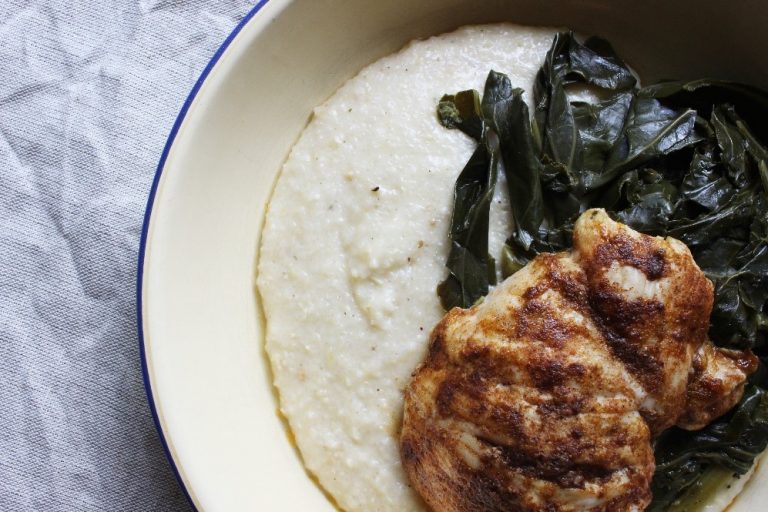
by Guest | Feb 21, 2020 | Eat Well, Recipes
By Gregory Lum, Dietetic Intern, Oregon State University
Let’s do a little thought experiment. Take a deep breath, and think about “healthy food.” What comes to mind? Any particular foods or styles of cooking?
I’ll bet Southern soul food wasn’t the first thing you thought of. After all, most people would think of foods like fried chicken or catfish, cornbread, and banana pudding. While folks on the street wouldn’t hesitate to say that all sounds delicious, few would call any of it “healthy.” It probably isn’t the best idea to eat fried chicken and banana pudding all day, every day anyway, but you can rest assured that soul food has its place at the table!
When I first asked you to think about “healthy food” you probably imagined a lot of fruits and vegetables. That’s a good start, but really, choosing from all food groups provides our bodies with the variety of nutrients needed to work properly. And yes, some foods are packed with more nutrients than others, but any food can fit when we seek balance in what we eat. Besides, we also eat for pleasure, whether that’s from tantalizing flavors or from memories stirred up by our individual comfort foods. Eating gives our bodies what they need and helps us practice good old-fashioned self-care, which are both important in pursuing wellness.
Now, let’s talk grits – Creamy Southern Garlic Cheese Grits in particular.
This recipe uses garlic, our seasonal ingredient of the month. Did you know many varieties of garlic grow well right here in Oregon? Chefs and home cooks use it worldwide because it adds flavor and depth to all manner of dishes. Garlic, although it tends to come in small doses, can benefit our health. It’s a source of the mineral manganese, which contributes to bone health, and different vitamins that help keep our bodies in tip-top shape.
So how can this recipe fit into your Year of Wellness? While it does contain saturated fat and sodium, which can be nutrients of concern for some, it also has great things going for it like protein, calcium, phosphorus, vitamin A, and vitamin B12. To incorporate these grits into a healthy meal, be aware of portion sizes. Practice moderation with this rich, delicious side dish. Take time to savor each bite!
Balance out your meal by enjoying these grits with a lean protein like grilled or oven-roasted Cajun chicken breast or catfish fillet. Toss a fresh, crisp salad or cook a batch of collard greens in low-sodium broth, and you’re set to gather family and friends around the table for dinner. Allow these grits or your favorite comfort foods to warm your soul as you share with your loved ones.
Creamy Southern Garlic Cheese Grits
Recipe Source: Susie Studer, Southern Roots Restaurant, Tillamook, OR
Number of servings: 6
Ingredients:
-4 cups water
-2 tablespoons unsalted butter
-6 small cloves garlic, minced well, or to taste
-½ cup heavy cream, or substitute milk for a lighter dish
-½ teaspoon salt
-1 cup uncooked quick grits, see notes below
-2 cups shredded mild cheddar cheese
-Salt and pepper, to taste
-Hot sauce, optional
Directions:
-Boil water in medium pot over medium-high heat. Meanwhile, heat small skillet on medium heat.
-Melt butter in skillet, then add minced garlic. Cook just until tender, stirring so the garlic doesn’t burn.
-Remove from heat and set aside.
-Once water boils, turn down to medium heat and stir in cream. Add salt, then slowly add grits while stirring constantly. –When starting to bubble, turn heat down to medium-low and simmer.
-Continue to cook and stir often until mixture is thickened and creamy, about 5 minutes.
-Add garlic and butter along with cheese. Continue to cook just until cheese melts.
-Taste and adjust seasoning. Add dashes of hot sauce if desired.
Notes:
Choosing grits: Regular or old-fashioned grits will take 10-15 minutes to boil. Instant grits are not recommended. Stone-ground grits may be available, and should be stored in the freezer to maintain freshness. Check package instructions for cooking time.
Cooking: For creamy grits, slowly pour the grits into the boiling water and cream mixture while stirring. Continue to stir the entire time they are cooking, until creamy and thickened. If the grits thicken too much, add a little more cream and beat to loosen.
Leftovers: Refrigerate, then cut into wedges before dipping in flour and pan-frying in a skillet. Serve as a side or use to make shrimp and grits.
For more local health and wellness information, follow Tillamook County Wellness on Facebook, Instagram and Twitter.
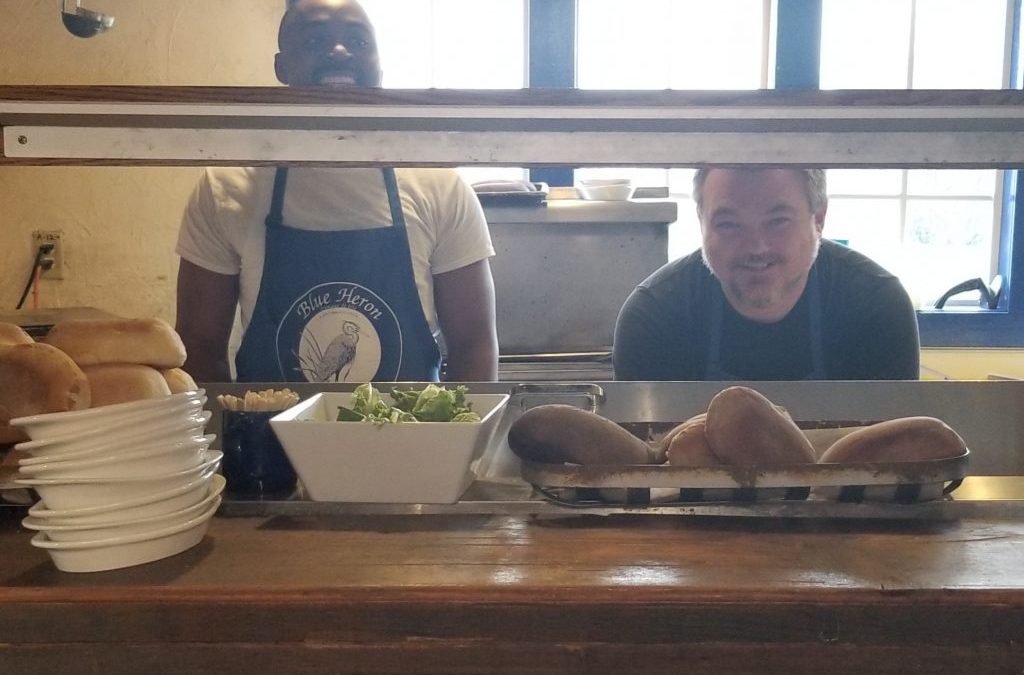
by Guest | Feb 14, 2020 | Eat Well, Recipes
Variety of Healthy Options, Daily Specials Featuring Fresh, Local Ingredients
By: Laura Swanson
A favorite local lunch spot for decades has been Blue Heron Cheese & Wine Company’s deli and especially for their various made-fresh-daily salads, soups and specials. Through the years, numerous chefs have provided recipes and guidance, Jim Fletcher took over the apron in the kitchen about 18 months ago. A Brooklyn native, Jim found his place in the kitchen at an early age with a love for baking beginning at age 5. He’s worked “both sides of the house” – as a waiter and chef in kitchens from the Biltmore Estate and five-star dining establishments in North Carolina to Florida, and finally finding a fit here on the West Coast at Blue Heron.
“Healthy eating is all about balance – eat the veggies, so you can eat some cake, too,” explains Jim. Over his 40+ years in food service, he’s “done it all”, describing his style as a “mish-mash, all-over” from Italian to Mexican, Thai, even sushi, to classic fine dining. “The style here at Blue Heron is all about fun and really good food,” said Jim. “Local, organic, seasonal, that’s how I cook. There are simple ways to ‘lighten up” recipes, for example, try a vegetable spinach soup with reduced sodium broth, and just enough olive oil or butter for a little flavor. There are many variations on Blue Heron salads, based on seasonality of ingredients and dietary options that can be utilized in your home kitchen.
The spinach vegetable soup is packed with nutrition; and the quinoa pilaf salad can be made with or without chicken, dried cranberries and with a vinaigrette.
Then let them eat cake, said Jim, as he continues to indulge his first love of baking with his wholesale bakery, Sweeet Tooth. Yes, that’s an extra “e” because it’s extra Sweeet, and as Jim explains,
“The three E’s in Sweeet describe my cooking/baking philosophy — Elevated Ingredients, Elegant Design, and Exceptional Quality”
You’ll find Jim’s creations regularly at Blue Heron from banana bread, cakes, cheesecake, brownies and more. You can enjoy treats like these as part of your overall eating well plan, as long as you remember the balance – calories count and food groups matter. Plan for those occasional sweets by:
-Eating a balanced diet (Myplate is an excellent resource!)
-Choosing lower calorie options
-Eating smaller portion sizes
Blue Heron’s SUPERFOODS Salad w/Raspberry Vinaigrette

One of the Tillamook County Wellness Blue Heron favorites is the “Superfoods” salad – it’s a power-packed “meal” in a salad, and Jim has shared the recipe with us! And it’s easy, flexible, and the best part is – you use ALL parts of vegetables as it incorporates shredded broccoli or cauliflower stalks.
Makes 6-8 servings
SUPERFOODS Salad
Select 3 vegetables from the list – 1 cup of each, shredded:
-broccoli, cabbage, kale, Brussels sprouts, cauliflower
Jim’s tip – Use what’s on sale, and seasonal. Use the broccoli or cauliflower florets in one recipe, then use the stems in Superfoods Salad. Reduce food waste by using all of the vegetable!
-Add ½ cup of nuts – sunflower seeds and/or almonds (or nut of choice)
-Select one or two fresh or dried fruits, 1 cup each
– blueberries, strawberries (when in season), dried cranberries, etc. – or again, what’s fresh, or on sale.
Lightly toss together all ingredients
Serve with raspberry vinaigrette (or dressing of choice.)
NOTE: You can mix the berries and nuts in separately and use any of the leftover veggie mix as the vegetable base in a soup, another great tip from Jim to reduce food waste and creatively use your vegetables.
Raspberry Vinaigrette
– 1 1/2 cups raspberries, fresh or frozen
– 1/4 cup red wine vinegar
-1 tsp red onion (optional)
-1 tsp Dijon mustard
-1/2 cup olive oil
-Salt, pepper, and honey to taste
Blend the first 4 ingredients with a stick blender or in a food processor, then while running slowly pour in the olive oil. Use salt, pepper, and honey to taste.
There are already-made options, such as Newman’s Own and Annies both make great Raspberry vinaigrettes as well, and using other dressings are just as acceptable.
This is a great salad to have mixed up in the fridge as an easy side dish to add veggies to your meal! Don’t forget to check out https://www.choosemyplate.gov; this is a great resource to help you get the recommended amounts of each food group so that you can continue or start to eat well!
Watch for “Wellness-Approved” menu items at restaurants throughout Tillamook County as our community is “Making Healthy Happen.”
For more local health and wellness information, follow Tillamook County Wellness on Facebook, Instagram and Twitter.

by Guest | Feb 6, 2020 | Eat Well
Image by: The Windy Wilsons, in Jewel-Osco, 2012
Guest column shared with permission from farm-to-table nutrition expert, Kim Kirchherr, MS, RD, LDN, FAND, ACSM-CPT. With her blog https://kimkirchherr.com/ Kim shares her love for food, farmers and healthy eating. This post is a great fit for Tillamook County Wellness as we focus on Eating Well in the New Year.
The “junk food” question comes up all. the. time. It’s especially common in conversations at the turn of the year when people look at their lifestyle choices with fresh eyes and try to do better.
There is no junk food. Seriously. Hear me out. Everything we can eat or drink does something for us. Some choices just work harder to do what we need.
At the most basic level, we need calories to survive. “Junk food”, however you personally define it, does this. Is that good enough? No.
We need a variety of nutrients to succeed mentally and physically. If you eat the majority of foods that “just” have calories and not nutrition (often referred to as “empty calories”), you are wasting opportunities to do better for yourself.
How I think about it is party food, sometimes food, and every day food:
The party food is the desirable, but maybe not the most nutrient-rich option.
The sometimes food is mindful choices with a few ingredient swaps to boost nutrition and/or remove some calories that don’t really need to be there. Like adding broccoli to mac n cheese. Or using reduced fat mayo/cheese/dressing (notice I didn’t say fat free).
The every day food is the stuff that is what I call the workhorses of our food choice. You know, things that MyPlate food groups represent – the wonderful, delicious choices within each food group that provide multiple nutrients in every bite we take.

MyPlate looks simple intentionally. The cool thing is, it represents the complicated food science as we know it today. You’ve heard of the Dietary Guidelines for Americans? This little cutie is the visual to make all those recommendations easier for us to actually take action on.
You might be rolling your eyes. That’s ok. Bring it. I stand by this and here is why: we have options – so many options – because our agriculture community is awesome at what they do. People demand an affordable, abundant food supply. We have that here. We are faced with literally tens of thousands of options in grocery stores. It’s up to us to choose what we need from what is offered.
I used to do store tours. We had about an hour and a half to get through the store, have a useful tip for each area (food group), and practical skills to make shopping more efficient, easier to find what you need, and learn how to identify items that would support your personal health goals. Yes. All that in under two hours. So obviously, we didn’t talk about every single item.
Oftentimes, my sassier fun groups would say, Kim, why are we passing the cakes and donuts?

Image by John Hain from Pixabay
Although it was mostly a timing issue, it was also on the list of party foods, so when this came up, I’d stop the group and say something like this: it’s someone’s birthday every day, so we sell birthday cakes every day. If today is not your birthday, you probably don’t need to be buying that birthday cake.
See what I mean?
It’s not word games. It is about being truthful with ourselves about what we need to be our best.
The best tip I can give you is, whatever you choose to eat, own it. Don’t “should” yourself, don’t try to trick yourself, and certainly, don’t let someone else who doesn’t have to deal with the consequences of your choices choose for you. If you want to eat something more desirable, make the choice, enjoy it, consider what else you are eating that day to balance the full day out, and off you go.
This is the start of a different year, a different decade, and (maybe) different choices. Picture yourself making different ones where you want and need to, enjoying it, and seeing a different outcome.
The thing is, if you keep doing what you are doing, you will be the same as you are. That might be just fine. If you want something else for yourself, try something new and know that it will be different. You can do it. After all, as of this year, we all have 2020 vision.
For more local health and wellness information follow Tillamook County Wellness on Facebook, Instagram and Twitter.
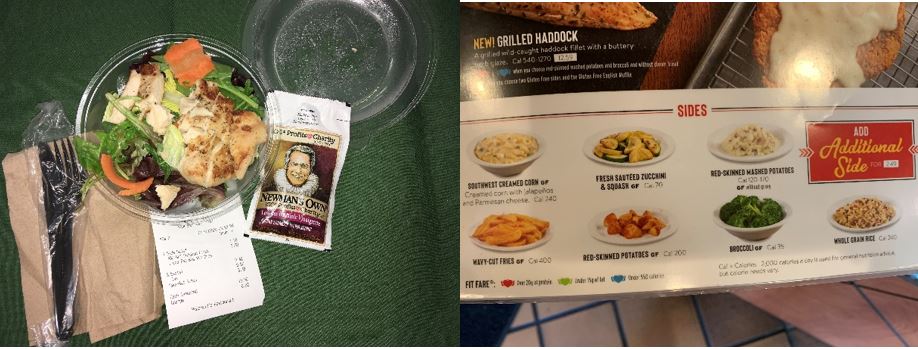
by Guest | Jan 30, 2020 | Eat Well
By: Mis Carlson-Swanson, Tillamook County Wellness Advisory Committee Member
Winter is my time for planning for the warmer, longer days of spring and summer. These plans usually include adventure and exploration, breaking the day-to-day routines, and getting back in touch with my free spirit. Destinations near and far pop into my mind, and I begin to dream and form plans. Road Trips…aren’t they the best?! Yes, if you have/take time to plan, and the determination to stick to the plan. As I get older, I find that how I eat during a lengthy road trip can make or break the experience. If I don’t stick to my plan, I tend to feel tired, sore, and a bit foggy…(Not exactly how you want to feel when you are exploring new places)…
Day 1 of a road trip usually starts out well…breakfast at home before we hit the road, then drive until the tank gets close to empty. Time to look for a gas station. Oh yeah, and a visit to the restroom, which is usually located at the back of the gas station, requiring us to walk through aisles lined with candy bars, chips, ice cream bars, sodas, energy drinks, and hot dogs spinning on the heating unit, just waiting to be put in a bun and slathered with condiments. And then I remember my plan, and say to myself “Wait, I have my healthy snacks all packed and ready to eat in my cooler in the vehicle”, right? Maybe on Day 1, but by Day 2 or 3, that determination can start to waiver a bit, and the bright colors and shiny wrappers of the “not-so-healthy” choices are harder to ignore. You can even begin to taste the salt and sugar, and feel the bubbles on your tongue….WAIT! Ok, maybe it’s just me, but my resolve does not typically last past Day 1.
Often, there is a McDonalds somewhere close to the gas station. Whew! A healthy alternative! “WHAT!?” you may be saying. But, yes, it can be true! Many don’t realize that you can order “al a carte” off of the menu, and if you use the new self-serve order stands in many McDonald’s, you can add and remove condiments and toppings to adjust the level of healthy. Here is my favorite…Side Salad with a plain grilled chicken breast and choice of a number of dressings. It’s cheaper, too!
How about an iHop, or Shari’s, or Denny’s? Healthy options, right?! Yes, if you are intentional. Side orders are my favorite part of the menu. So many of their meals include huge extras like hash browns, pancakes, or biscuits, which I love, but need to limit or avoid altogether. But once they are in front of me, warm and smelling delicious, it is so hard to resist. I tell myself I will bring them home in a to-go container for my boys to eat, but do they really? So, side orders of the healthy items you have decided are best for you, come out looking and tasting just as yummy, without the less healthy temptations. Red Robin offers unlimited side-salad or fresh-steamed vegetables instead of bottomless fries, for instance, no additional charge. Club soda is often (not always) a free beverage option that provides the satisfaction of bubbles, saving money, and it tastes even better when you add a twist of lime or lemon.
When I remember and stick to these options when I am traveling, I feel energetic, happy, and ready to go, which is exactly what I want to feel when out on an adventure.
For more local health and wellness information, follow Tillamook County Wellness on Facebook, Instagram and Twitter

by Guest | Jan 24, 2020 | Eat Well
By:
Dusti Linnell, PhD, OSU Extension Service, Tillamook and Lincoln County, & Anne Goetze, RDN, LD, Oregon Dairy and Nutrition Council
Eating out is something we all do. A 2019 survey found that 56% of Americans either dine-out or order-in 2-3 times each week (Truth About Dining Out ?) According to the survey, 10% choose these options 4 – 6 times per week and 6% do so every day. This includes everything from ordering and eating at a restaurant, drive-through dining, and meal delivery. There are so many reasons why: most people say it is just easier, some say the food is higher quality, others dine-out to spend time with family and friends.
Tillamook County Wellness is celebrating Eating Well for the first few months of 2020 as part of our Choose Well campaign. With this blog post, we are here to help you eat well by choosing well when you eat out. Since we all do it, let’s make the most of it!
The Dietary Guidelines for Americans show us that most Americans typically do not get enough vegetables, dairy, whole grains and even fruit. While most get too much sugar, fat, salt and too many calories. Using MyPlate as your guide, even when you are eating out can help you choose well. A simple way to approach food choices is to think about the food groups pictured in MyPlate.
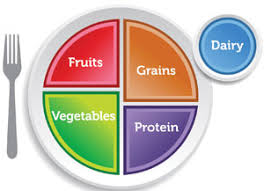
When you order, think about what you’ve already eaten that day and what you might eat the rest of the day. What’s missing? What can you choose so that at the end of the day your virtual MyPlate will be balanced and full, but not overflowing.
Here are a few tips for things to think about when you order in any restaurant:
- Boost fruits and veggies.
- Ask for extra veggies.
- Add or substitute red, orange, or dark green vegetables whenever you can. Try arugula or spinach instead of lettuce, even on a burger.
- Get the most from side dishes. Try green salad, fruit, corn, beans, or vegetable soup.
- If you are going to eat dessert, choose pie, cobbler or other food where fruit is the main ingredient.
- Increase whole grains.
- Ask for whole wheat sandwich bread, burger buns, tortillas or pizza crusts.
- Look for deli salads with grains like bulgur, quinoa, wheat berries and even brown rice.
- Add dairy.
- Add a slice of cheese to a sandwich or burger.
- Grab a carton or bottle of milk.
- Enjoy a bowl of chowder.
- Choose yogurt or a yogurt parfait.
- Order a latte.
- Reduce added sugar.
- Instead of soda, order milk, 100% juice or unsweetened iced tea with lemon.
- Skip the cookies, or have just one.
Here are some ways you can put these tips into action in restaurants all over Tillamook County:
- Going out for chicken teriyaki? Ask for extra veggies and pea pods in your stir-fry or on the side. If you have rice, ask for brown rice.
- Craving that delicious macaroni and cheese? Great! Order a cup of tomato soup to go with it and get half of the macaroni and cheese in a to-go box for tomorrow’s lunch.
- Having a peperoni and cheese pizza? Add peppers and onions. Order salad to eat with the pizza.
- Are you hungry for an awesome burger? Enjoy it, but request extra pickles, lettuce, tomato, or onion. You could also order a small or kid size burger and a salad. Make it a cheeseburger.
- Ask your favorite coffee drive-thru for a mocha that is half-sweet.
- Going out for a burrito? Request extra pico de gallo and whole beans swapped out for refried. Need more dairy? Order extra cheese. Too many calories? Skip the rice.
- Is it barbeque day? Don’t skip the coleslaw. Made with cabbage and carrots, coleslaw counts as a vegetable.
- Grabbing a quick sub sandwich? Order whole wheat bread and extra veggies like spinach and bell peppers. Grab a bottle of milk to make it a meal.
With so many options, you can make the most of eating well while eating out. Let MyPlate be your guide and try some new options. After all, to goal to eating well is finding the choices that work for you.
For more local health and wellness information, follow Tillamook County Wellness on Facebook, Instagram and Twitter.
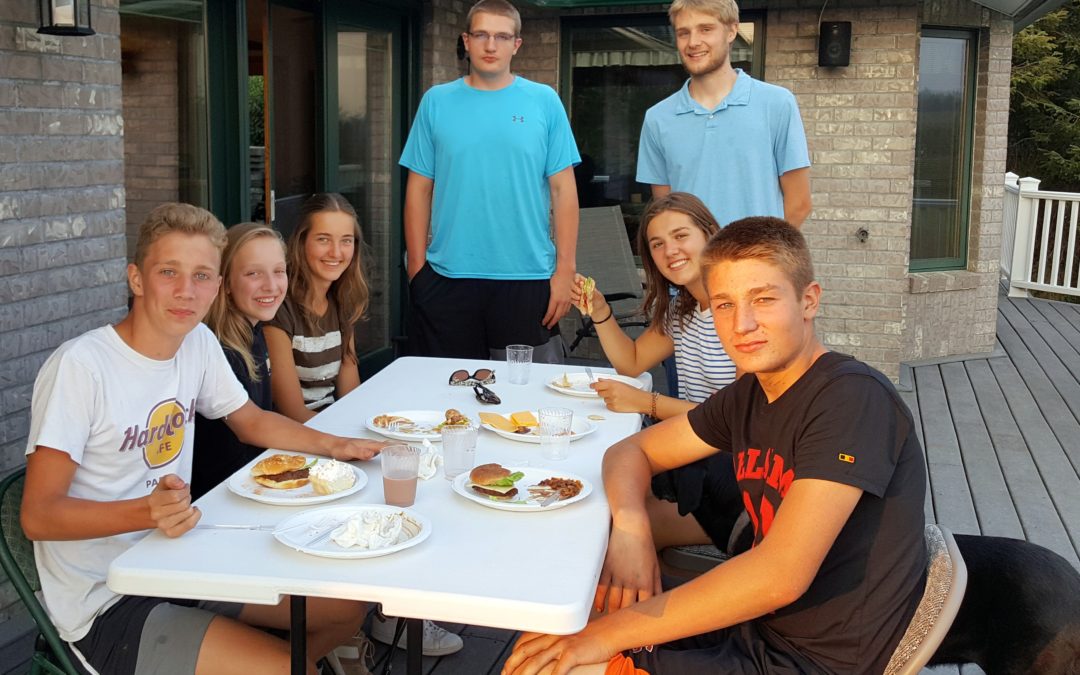
by Michelle | Jan 17, 2020 | Eat Well
By: Michelle Jenck, TC Wellness Coordinator
Tillamook County Wellness is all about making healthy happen in 2020. We are encouraging people to Choose Well – a campaign series that will run throughout the year, providing support and local resources for living a healthier life. To kick things off, we are launching our Eat Well campaign, highlighting specific ways we can improve our eating patterns. As coordinator of our wellness initiative, I am sharing some of my own experience and inspiration for making healthy, restaurant-inspired meals everyone can enjoy.
Our family celebrated the New Year with football and peanut butter, pickle and pineapple hamburgers. This tasty nugget was inspired by a visit to Killer Burger more than a year ago. Other restaurant-inspired foods that have made their way onto our kitchen table include squash soup, roasted Brussel sprouts and kale salad; all foods we would not have considered making at home until we discovered their deliciousness at a restaurant. Much of our inspiration has come from local restaurants like The Creamery, Blue Heron, Pacific Restaurant and Antonette’s, to name a few. You don’t have to eat out to enjoy a good meal that’s also good for you.
Growing up, I didn’t give much thought to how or what I ate. As we began to raise a family, and as I worked toward earning a master’s degree in Health & Kinesiology, my relationship with eating and cooking changed. It was a slow process, motivated by my desire to serve healthy meals to our growing boys. When I understood the role good nutrition played in how their brains developed and how that would help them become better learners in school, it became a major priority for me to prepare and serve healthy food at home.
There was just one problem. The foods my kids liked to eat weren’t very healthy and they turned their noses at the healthy options I tried to serve. It didn’t help that I am really not much of a cook. I had to figure out how to make healthy food taste better. I began to change t my cooking habits based on things our family enjoyed when we ate out.
One of the biggest changes I made was to add more vegetables and flavor to our meals. There are three magical ingredients that worked for us . . . garlic, onion and olive oil. There are very few nights of the week my kitchen does not smell like a combination of these ingredients. It doesn’t matter if we are eating whole wheat spaghetti, chicken stir fry with brown rice or a veggie frittata, I always start with those three ingredients. To this day, that is one of my favorite smells when I walk into a restaurant. And that’s when I knew our family had made the change toward better eating – when my kids came home from sports practice or work and, as they entered the kitchen, would breathe in deeply and say, “Yum, what smells so good?”
There are so many simple tips and tricks that have helped me become a better and more confident cook. It’s taken twenty years and it is still a work in progress. The biggest lesson I have learned is that motivation matters. I didn’t get serious about eating better until I decided to do it for my kids. We’d love to hear from you, whether you are an experienced cook or someone who, like me, entered the kitchen as a reluctant chef. What simple changes have you made to your eating habits and what changes have you noticed as a result? What has motivated you and what barriers have you had to overcome? If you’d like to share your story, reach out to us at tillamookcountywellness@gmail.com and join us in making healthy happen in Tillamook County.
For more local health and wellness information, follow Tillamook County Wellness on Facebook, Instagram and Twitter.









